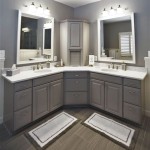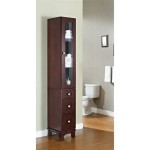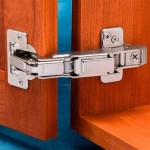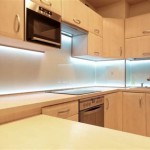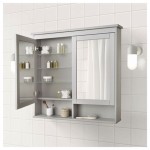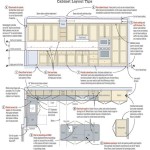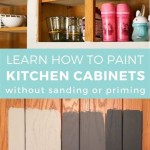The Perfect Dining Room Corner Cabinets For 600 ml Of Water
The selection of appropriate dining room furniture necessitates careful consideration of space constraints, storage requirements, and aesthetic preferences. Corner cabinets, in particular, represent a valuable solution for maximizing storage potential within limited spaces. When factoring in the storage of specific items, such as commonly used 600 ml water bottles, the dimensions and internal configuration of the corner cabinet become crucial determinants of its suitability. This article delves into the key aspects to consider when selecting dining room corner cabinets specifically designed to accommodate and organize 600 ml water bottles, ensuring both functionality and visual harmony within the dining area.
Corner cabinets offer a significant advantage over traditional straight-edged cabinetry because they utilize otherwise underutilized corner spaces. This allows for a denser packing of storage elements without significantly impinging upon the floor space within the dining room. The ideal corner cabinet for storing 600 ml water bottles will balance efficient use of the corner with accessibility and visual appeal. Considerations must include the cabinet’s overall dimensions, the internal shelving configuration, the materials used in its construction, and its stylistic integration with the existing dining room décor.
Determining Optimal Dimensions and Internal Configuration
The dimensions of a corner cabinet are paramount. While the overall height, width, and depth are important, the internal shelving configuration is critical for efficient storage of 600 ml water bottles. A standard 600 ml water bottle typically has a height of approximately 9 to 11 inches (23-28 cm) and a diameter of about 3 inches (7.6 cm). Therefore, shelves must be spaced appropriately to accommodate the height of the bottles with a reasonable clearance above each bottle for easy retrieval. Inadequate spacing will result in wasted vertical space, reducing the overall storage capacity of the cabinet.
A shelf spacing of 12 to 14 inches (30-35 cm) is generally recommended to accommodate 600 ml water bottles comfortably, allowing for easy reach and preventing overcrowding. The depth of the shelves should also be adequate to ensure that bottles can be stored stably without tipping. A shelf depth of at least 10 inches (25 cm) is typically sufficient. The overall width and depth of the corner cabinet itself depend on the available space within the dining room corner and the desired storage capacity.
Consider adjustable shelving as a highly desirable feature. Adjustable shelves offer flexibility to customize the storage space according to specific needs. This allows the user to reconfigure the cabinet to accommodate bottles of different sizes or to store other dining room essentials if the needs change in the future. The adjustability also ensures that vertical space is optimized, preventing unnecessary gaps and maximizing storage efficiency.
The shape of the cabinet's interior also plays a role. Most corner cabinets are either L-shaped or pie-shaped to fit snugly into the corner. L-shaped cabinets often offer more linear shelf space, which can be advantageous for storing a large number of water bottles in rows. Pie-shaped cabinets, on the other hand, might offer a more aesthetically pleasing design but could potentially result in less usable shelf space due to the curved shape.
Furthermore, consider the weight-bearing capacity of the shelves. Filled 600 ml water bottles can be quite heavy, especially when stored in large quantities. The shelves must be constructed from sturdy materials and designed to withstand the weight without sagging or warping over time. Solid wood or high-quality engineered wood products are generally recommended for their durability and strength.
Material Choices and Their Impact on Aesthetics and Durability
The selection of materials for a dining room corner cabinet is a significant factor influencing its durability, aesthetics, and overall value. Commonly used materials include solid wood, engineered wood (such as plywood or MDF), metal, and glass. Each material offers distinct advantages and disadvantages in terms of appearance, cost, and maintenance requirements.
Solid wood cabinets are prized for their natural beauty, inherent strength, and longevity. Hardwoods like oak, maple, and cherry are particularly popular choices for dining room furniture due to their durability and resistance to wear and tear. However, solid wood cabinets tend to be more expensive than those made from engineered wood.
Engineered wood products offer a more cost-effective alternative to solid wood. Plywood and MDF are manufactured by bonding layers of wood veneers or wood fibers together under pressure. These materials are generally more stable than solid wood and less prone to warping or cracking. High-quality engineered wood cabinets can provide comparable durability to solid wood at a lower price point. The quality of the finish is crucial for engineered wood, as it protects the material from moisture and everyday wear.
Metal accents, such as handles, hinges, and decorative trim, can add a touch of modern elegance to a corner cabinet. Metal is also commonly used for adjustable shelf supports, providing strength and stability. Glass doors or panels can enhance the visual appeal of the cabinet, allowing for the display of attractive water bottles or other decorative items. Tempered glass is preferred for its safety and durability.
The finish applied to the cabinet is another critical consideration. A durable and attractive finish will protect the material from scratches, stains, and moisture damage. Common finishes include paint, stain, varnish, and lacquer. The choice of finish should complement the existing décor of the dining room and reflect the desired aesthetic style. Water-based finishes are generally preferred for their low VOC emissions and environmental friendliness.
Stylistic Integration with the Dining Room Décor
A dining room corner cabinet should seamlessly integrate with the overall aesthetic style of the room. The cabinet's design, color, and finish should complement the existing furniture, wall colors, and flooring. A well-chosen corner cabinet will not only provide functional storage but also enhance the visual appeal of the dining room.
Consider the existing furniture style when selecting a corner cabinet. If the dining room features traditional furniture with ornate details, a corner cabinet with similar detailing and a rich wood finish would be a suitable choice. Conversely, if the dining room has a more modern or minimalist style, a corner cabinet with clean lines, a simple design, and a neutral color palette would be more appropriate. The goal is to create a cohesive and harmonious look throughout the room.
The color of the corner cabinet should also be carefully considered. A cabinet that matches or complements the existing wall color can create a sense of visual unity. Alternatively, a cabinet in a contrasting color can serve as a focal point within the room. Natural wood finishes, such as oak, maple, or cherry, are versatile and can complement a wide range of color schemes. Painted cabinets offer even greater flexibility, allowing for customization to match specific color preferences.
Hardware choices, such as handles and knobs, can significantly impact the overall style of the corner cabinet. Traditional hardware, such as brass or antique silver, can enhance the classic look of a traditional cabinet. Modern hardware, such as stainless steel or brushed nickel, can complement the sleek lines of a contemporary cabinet. The hardware should be consistent with the existing hardware used on other furniture in the dining room.
Finally, consider the lighting within the dining room when selecting a corner cabinet. A well-lit corner will highlight the cabinet's features and enhance its visual appeal. If the corner is dimly lit, consider adding a small lamp on top of the cabinet or installing interior lighting to illuminate the stored items. This can not only improve the functionality of the cabinet but also create a warm and inviting atmosphere within the dining room.
In summary, selecting the perfect dining room corner cabinet involves a multifaceted approach, encompassing considerations of dimensions, materials, and stylistic integration. Prioritizing these factors will lead to the selection of a corner cabinet that not only effectively stores 600 ml water bottles but also enhances the overall aesthetic appeal and functionality of the dining room.

Goodhome Caraway Matt White Corner Wall Cabinet W 630mm D 320mm

Svopes Corner Industrial Bar Cabinet For Liquor And Glasses Free Standing Farmhouse Wood Coffee Qj23631573211crj2v0 1101 The Home Depot

Goodhome Caraway Matt White Corner Wall Cabinet W 630mm D 320mm

Svopes Corner Industrial Bar Cabinet For Liquor And Glasses Free Standing Farmhouse Wood Coffee Qj23631573211crj2v0 1101 The Home Depot

Goodhome Caraway Matt White Corner Wall Cabinet W 630mm D 320mm
Kaboodle 600mm White Wall Corner Cabinet Bunnings

White Bathroom Oak Top Vanity Unit Corner Sink Cabinet Ceramic Wash Basin Tap Plug 501bpcbc

17 2 In W X D 31 5 H Gray Linen Cabinet Triangle Corner Storage With Adjustable Shelf Wq 829 The Home Depot

Goodhome Caraway White Base Unit W 600mm

Chaletsplus Chalet Hochland
Related Posts

